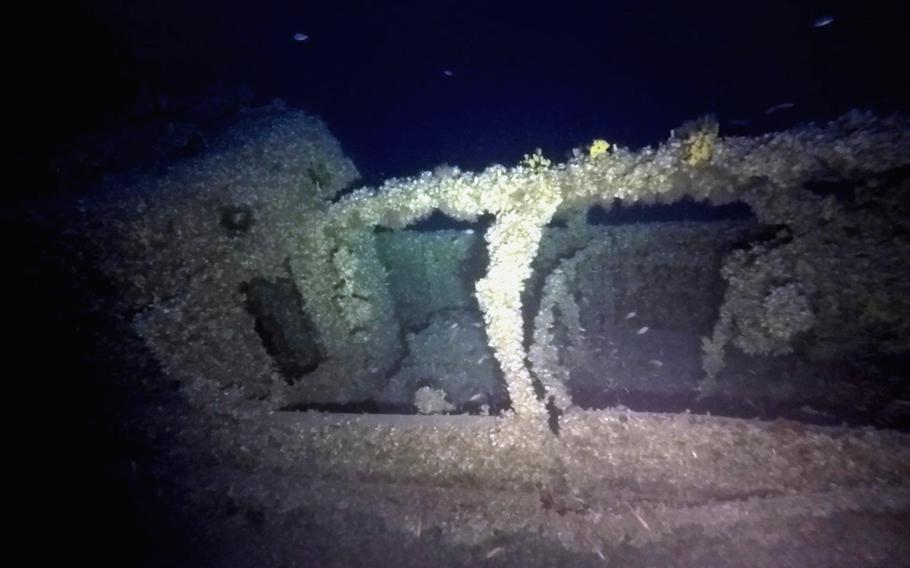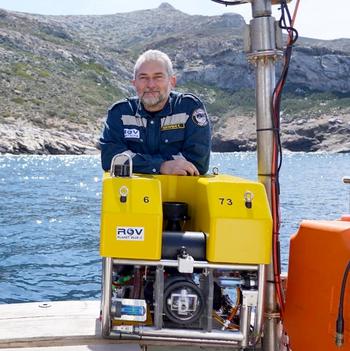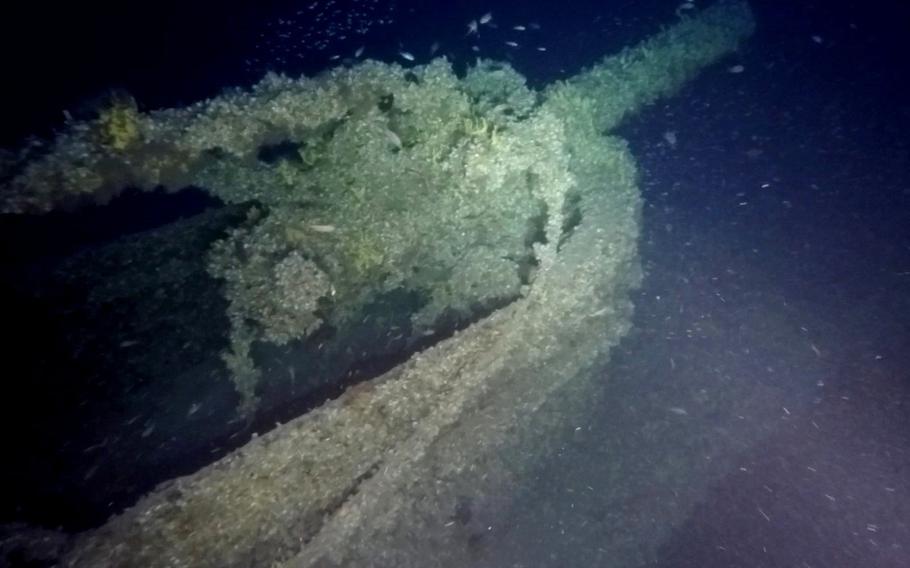
A submarine wreck in the Aegean Sea, photographed by a remotely piloted submersible. (Kostas Thoctarides)
In 1941, the British T-class submarine Triumph played a risky game of hide and seek in a covert theater of World War II. The British Royal Navy sub darted between assignments in the heavily patrolled waters of the Mediterranean, sinking enemy ships and surfacing to deliver Allied operatives on secret raids in Axis-occupied Greece. Then it vanished on its final assignment in January 1942, somewhere in the Aegean Sea.
Kostas Thoctarides, a Greek diver, learned the story of Triumph some 50 years later, he said in a message to The Washington Post. An attaché at the British embassy in Greece told him the story of the submarine and the role it had played fighting for occupied Greece. He was enthralled.
“That was it,” Thoctarides recalled. Triumph became his white whale.
Thoctarides was no stranger to maritime mysteries. The veteran explorer had surveyed several shipwrecks and discovered the wreck of another British submarine that sunk near Greece in 1997. But Triumph was a puzzle he had to piece together slowly in his spare time, scouring historical archives in four countries and, eventually, a search area in the ocean over 40 nautical miles across.
Then, on a recent search, an odd image appeared when Thoctarides conducted a sonar sweep in the Aegean Sea, dozens of miles from the Greek shore. In May, he sent down a remotely piloted submersible. Eventually, the ghostly image of a rusted stern loomed into view on Thoctarides’s monitor. It was the wreck of a submarine.
“It is a journey through time,” Thoctarides wrote to The Post. He announced on social media earlier this month that he believes the discovery to be Triumph.
A spokesperson for the Royal Navy confirmed that Triumph was operating in the area where Thoctarides discovered his wreck, but said additional assessments are ongoing to confirm the submarine’s identity.
Triumph was a T-class submarine, a nimble Royal Navy craft designed to dive quickly and sink large ships using a barrage of torpedoes. Triumph did exactly that while patrolling the Mediterranean in 1941, according to the HMS Triumph Association, a British organization dedicated to promoting the history of and search for the missing submarine.
Thoctarides and other researchers pieced together Triumph’s final mission from historical archives in Britain, Germany, Italy and Greece. The submarine was set to return home after a grueling year in the Mediterranean, but took on a final assignment in December 1941: a daring incursion to an island off the Greek coast to deliver supplies to soldiers trapped in Greece after an Allied defeat, according to the association.

Kostas Thoctarides is no stranger to maritime mysteries. (Kostas Thoctarides)
Triumph dropped off its cargo and was supposed to return to retrieve the operatives 10 days later, according to the HMS Triumph Association. It never did. The submarine struck a mine in January 1942 and sank, according to the Royal Navy. Sixty-four people were aboard.
For years, researchers pored through documents and reported sightings of the sub to try to narrow down its final location.
The submersible Thoctarides sent down in May confirmed his findings. There, sunk in the sand at a depth of 670 feet, sat the wreck of a submarine.
“It was very moving,” Thoctarides said. “I was in awe.”
Thoctarides said the wreck he found has the design and features of a T-class submarine, including the placement of its torpedo tubes and the shape of its control tower. During the war, no other T-class submarine operated in the area he discovered the wreck, he said. He believed it to be Triumph as soon as the submersible’s images appeared on his screen.
“I had no doubt at that moment I was looking at the legendary H.M.S Triumph,” Thoctarides said.

The wreck of a submarine in the Aegean Sea, photographed by a remotely piloted submersible. (Kostas Thoctarides)
The wreck, crusted over with growths of marine life and surrounded on video by schools of fish, might also shed light on the submarine’s final moments. Thoctarides said the submarine he found appears to have had an explosion in its bow. Triumph struck a mine.
The hatches on the submarine Thoctarides found were closed, which he said could mean that it was in a deep dive when it sank. Strikingly, a torpedo tube on the submarine was open, and a torpedo was half-out of the submarine.
If the submarine is Triumph, Thoctarides said that would likely mean its entire 64-man crew was aboard — and locked in combat — when the craft sunk.
While British officials are still working to confirm whether the submarine discovered in the Aegean Sea is Triumph, relatives of its crew have already contacted Thoctarides to express their gratitude, he said. Thoctarides said he and his crew will return to the site for a memorial service, and that his team has also contacted naval experts to further analyze the shipwreck.
“HMS Triumph must be treated with the respect and sanctity it deserves as a ‘maritime war grave,’ ” Thoctarides wrote.